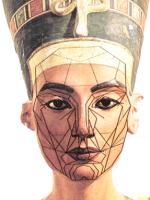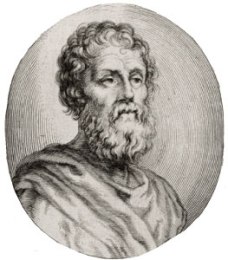
The National Grand Theater in Beijing - A Product of Plastic Surgery and Engineering?
I am often asked How an Electrical and Computer Engineering Major becomes a Plastic Surgeon. I graduated with High Honors from the University of California, Davis, College of Engineering, and I work as a Board Certified Plastic Surgeon in the San Francisco Bay Area. Even though my college major was Electrical and Computer Engineering, my goal out of high school was to practice medicine. I completed my medical school prerequisites along with the requirements for my major. Other than summer jobs, I never worked as an engineer, though my major gave me a great backup plan. Upon graduation, I received the Regents Scholarship. This allowed me to pursue my primary goal and attend medical school. I selected to remain at the University of California, Davis, School of Medicine.
How Can Engineering Help Plastic Surgery?
While at first engineering and medicine may seem worlds apart, the type of critical thinking gleaned from my engineering training helps me be a better doctor every day. Engineering training taught me how to analyze systems, and the human body is made of many interconnected systems. The circulatory system, nervous system, skeletal system, muscular system and numerous other systems all must function optimally for the best results. Systems analysis, boundary conditions and integration analysis help me understand what I need to do as a plastic surgeon, and can predict the safest and most predictable path to success. Whether I am repairing an injury or performing cosmetic surgery, my engineering training has given me a great platform on which to build my San Francisco Bay Area Plastic Surgery practice.
Engineering Training
The contrast in engineering and medical training is best illustrated in how examinations are given. In engineering you learn equations, math and materials. These are the tools of the trade. Exams do not ask you to repeat what is known, but ask you to solve the unknown. The problems presented on the exams are novel, and you learn how to use engineering’s tools to discern the solution. The questions lend themselves to examinations involving problem solving, and individual analysis, not multiple choices. Since the rules apply to the physical world, they are universal. Equations regarding structural integrity apply to all structures: bridges, buildings or spacecraft. Since engineering puts the emphasis on how to apply rules, rather then the rules itself, the knowledge can often be applied to new situations easily and predictably.
For example, the advent of Bariatric Surgery has spawned Bariatric Plastic Surgery. Successful bariatric surgery can lead to 100’s of pounds of weight loss, and yards of loose skin. Even after the fat is gone, when this loose skin is on the lower belly, it can be difficult to get clothes to fit properly. The tummy tuck can be very helpful in many cases, but as a member of the American Society of Bariatric Plastic Surgeons, I know that larger excesses of skin may require modifications. My engineering training helps me analyze the skin excess and calculate what will work best — a tummy tuck, a Fleur-de-Lis Tummy Tuck or perhaps a lower body lift. When skin excesses arise in other parts of the body, like the arms, my engineering training allows me to see how to modify a tummy tuck into the seemingly unrelated arm lift or brachioplasty to remove excess upper arm skin.
Medical Training
Medical training puts the emphasis on memorization. Like engineering, the goal is to build a broad base of knowledge. Facts are organized and stored so that specific diseases can be recognized, and treatments prescribed. The knowledge is specific to each disease, and while there are similarities between diseases, what works in one disease may lead to disaster with another. As a result, medical training puts emphasis on the linear path from diagnosis to treatment. Some acknowledgment of similarities between diseases and treatments occurs, but this is not the primary pathway for decision making, and can inhibit medical advances when combined with super-sub-specialization. The problems presented on medical school examinations are directed towards fact checking rather than problem solving. They are, as a rule, multiple choice. The goal is to be certain that your doctor can recognize a disease. Moreover, once the disease is identified, your doctor must know what other tests to order, what other problems to look for, what treatments are available and what side effects can be expected. All of these can be represented as lists of options, and tested with multiple choice examinations.
Applying The Knowledge
If your doctor is a specialist treating physical illness, medical training works very well. The number of diseases and treatments are finite. When the disease is unknown, however, there are few equations to apply to the analysis. Either more testing is needed to identify something treatable, or the situation becomes a series of trial and error.
My specialty, plastic surgery, has its “plug-n-play” aspects, especially when it comes to reconstructive plastic surgery. Cosmetic plastic surgery involves making a diagnosis and providing appropriate treatment, but there is also a fair amount of art and engineering involved. Take the nose job (Rhinoplasty) as an example. Even the “perfect” nose will not look good on every face. The ability to preserve the proportions of the nose with respect to the face on which it rests, is more important than providing the “perfect” nasal shape. Beautiful proportions can be easily represented mathematically, and again this is where the engineering comes in.
What’s Math Got To Do With It?
 Some dimensions should be equal, like when trying to improve or preserve symmetry. The eyes, for example, are rarely identical, but beauty is associated with symmetry. Even 6-month-old infants will stare at photographs of beautiful, symmetrical faces. The more asymmetrical the face, the less eye contact they will maintain. Severely asymmetrical faces are avoided completely.
Some dimensions should be equal, like when trying to improve or preserve symmetry. The eyes, for example, are rarely identical, but beauty is associated with symmetry. Even 6-month-old infants will stare at photographs of beautiful, symmetrical faces. The more asymmetrical the face, the less eye contact they will maintain. Severely asymmetrical faces are avoided completely.
While some dimensions should be equal, other dimensions require proportional increases or decreases in length to give a result that is pleasing to the eye.
The Golden Ratio (Phi)
The prime example of a pleasing ratio is the Golden Ratio (1:1.618…). On a beautiful face, it represents the ratio between the base of the nose and the width of the mouth. In a beautiful smile, it is the ratio between the width of the upper front tooth, and the tooth next to it. It is a physical proportion that looks nice. Like in medical training, if you want to use it you have to memorize it. Like in engineering training, it is an equation that can be applied universally.
Phi Is For Phidias
 The golden ratio is represented by the Greek letter Phi, in honor of Phidias, who was perhaps the greatest ancient Greek sculptor. He is best known for creating two enormous sculptures: One of Athena in the Parthenon, and the other of Zeus at Olympia, that became the models upon which our current representations are based. It is believed he designed and supervised construction of the Parthenon in mid 400 BC. The beauty of his sculpture comes from the careful expression of proper golden ratios.
The golden ratio is represented by the Greek letter Phi, in honor of Phidias, who was perhaps the greatest ancient Greek sculptor. He is best known for creating two enormous sculptures: One of Athena in the Parthenon, and the other of Zeus at Olympia, that became the models upon which our current representations are based. It is believed he designed and supervised construction of the Parthenon in mid 400 BC. The beauty of his sculpture comes from the careful expression of proper golden ratios.
There was not a lot of emphasis placed on the Golden Ratio in Medical School. I first learned about it from my mother who taught art. Its importance was reaffirmed in subsequent Mathematics and Engineering classes, and reappeared during my Plastic Surgery Training. By then we were old friends. This is just one way engineering training helped prepared me to become a successful plastic surgeon. I always liked math. It is beautiful in its simplicity. It is definite, predictable and has well defined answers to most problems, but it wasn’t until later in life that I learned that math can also describe something as abstract as beauty. It’s another aspect of engineering that helps me be a better plastic surgeon. It allows me to understand the rules of Plastic Surgery, because often in Plastic Surgery there is more than one right answer, and the best answer is dependent on who is asking.
Previous Post Next Post